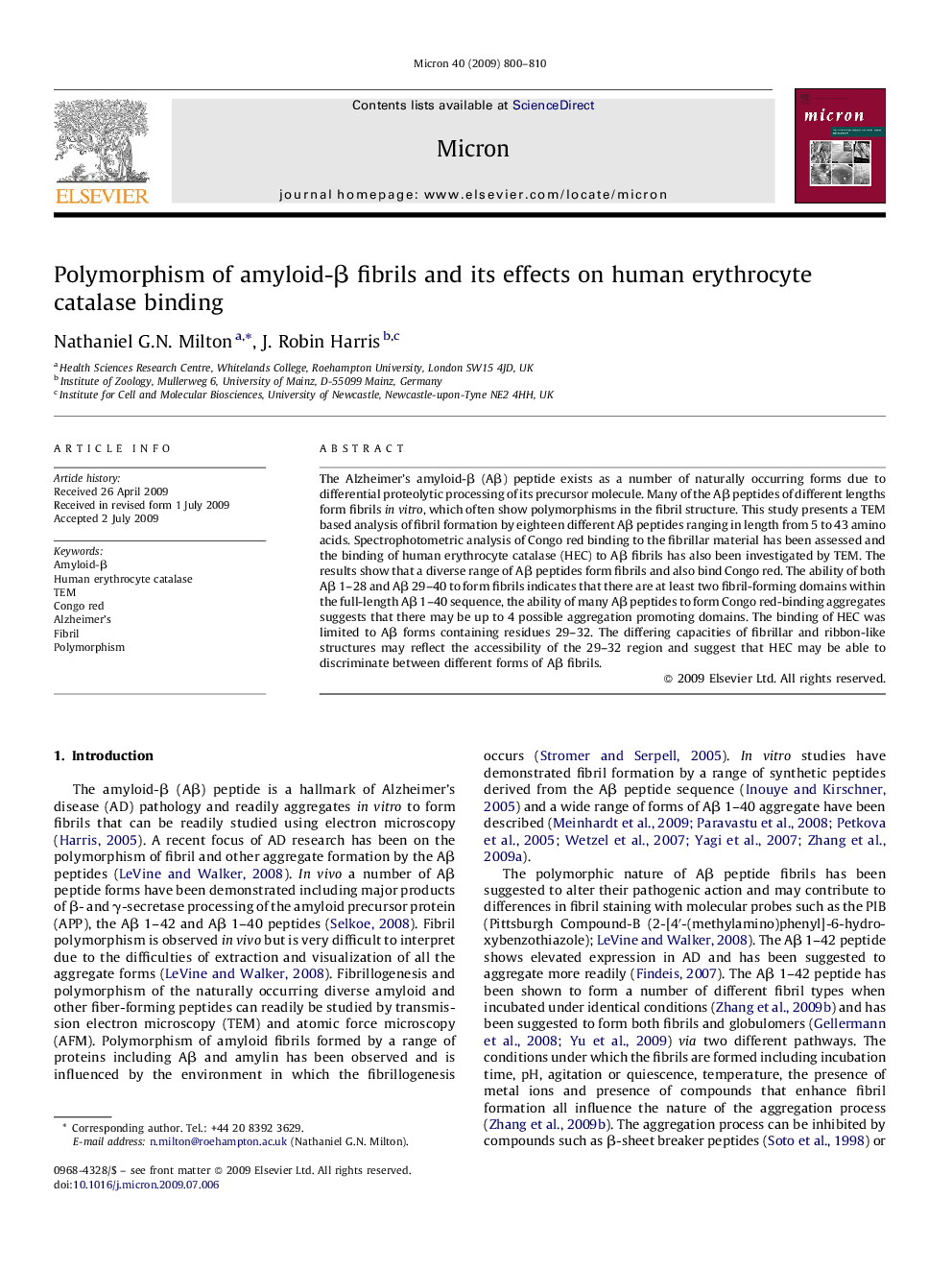| Article ID | Journal | Published Year | Pages | File Type |
|---|---|---|---|---|
| 1589974 | Micron | 2009 | 11 Pages |
The Alzheimer's amyloid-β (Aβ) peptide exists as a number of naturally occurring forms due to differential proteolytic processing of its precursor molecule. Many of the Aβ peptides of different lengths form fibrils in vitro, which often show polymorphisms in the fibril structure. This study presents a TEM based analysis of fibril formation by eighteen different Aβ peptides ranging in length from 5 to 43 amino acids. Spectrophotometric analysis of Congo red binding to the fibrillar material has been assessed and the binding of human erythrocyte catalase (HEC) to Aβ fibrils has also been investigated by TEM. The results show that a diverse range of Aβ peptides form fibrils and also bind Congo red. The ability of both Aβ 1–28 and Aβ 29–40 to form fibrils indicates that there are at least two fibril-forming domains within the full-length Aβ 1–40 sequence, the ability of many Aβ peptides to form Congo red-binding aggregates suggests that there may be up to 4 possible aggregation promoting domains. The binding of HEC was limited to Aβ forms containing residues 29–32. The differing capacities of fibrillar and ribbon-like structures may reflect the accessibility of the 29–32 region and suggest that HEC may be able to discriminate between different forms of Aβ fibrils.
